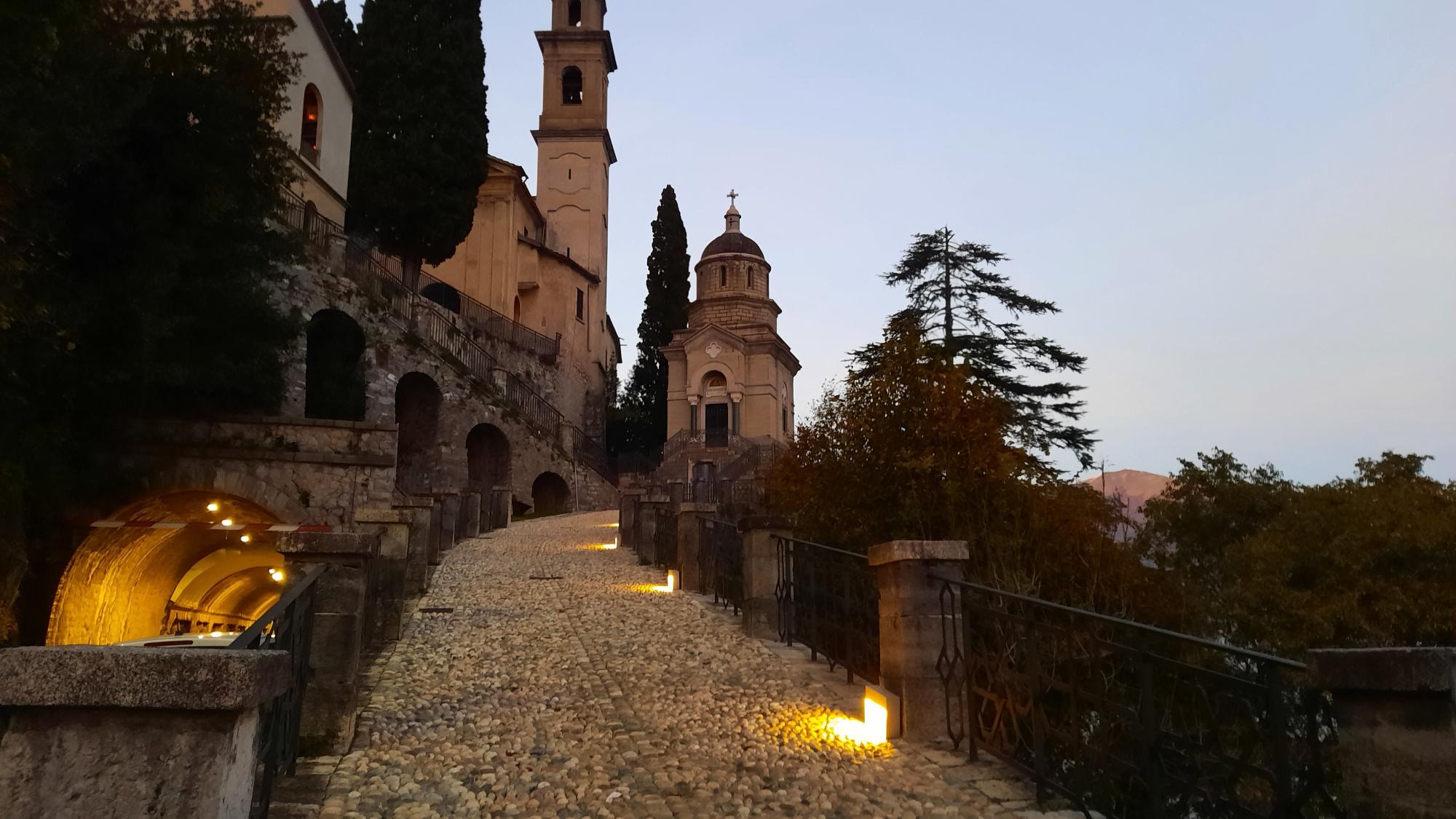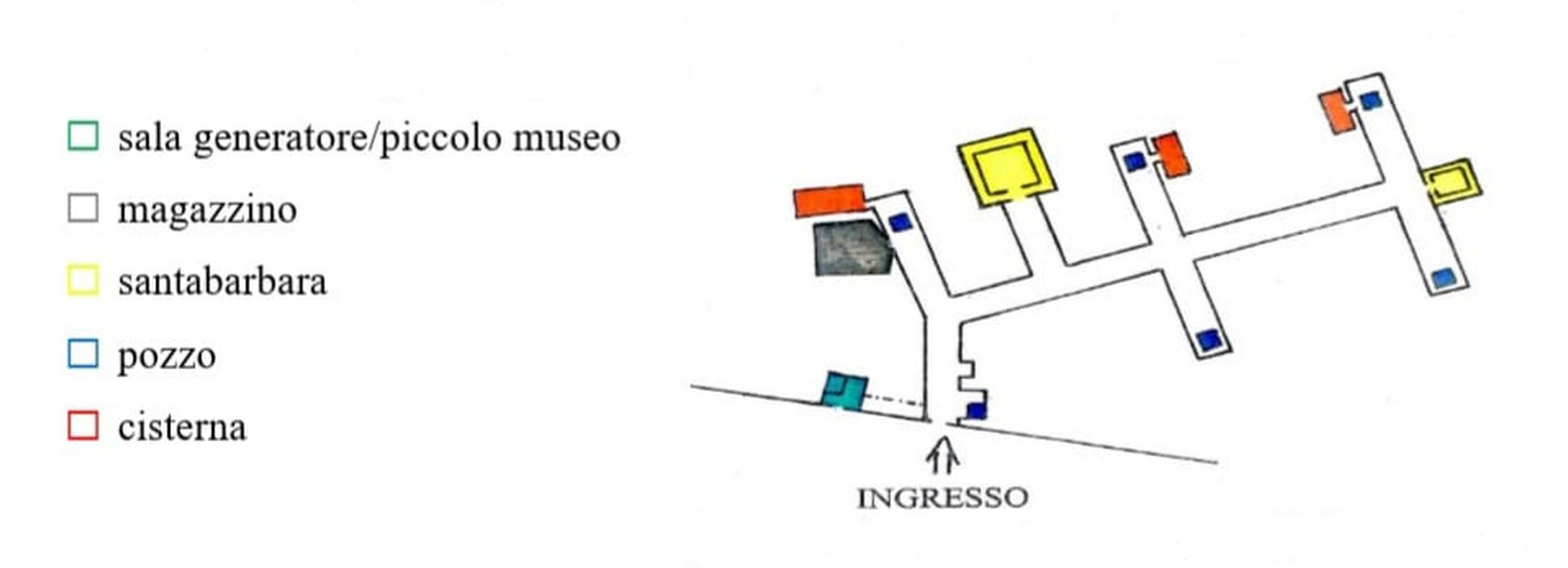

Below the churchyard of Chiesa della Madonna del Ronco we encounter a tunnel, dug for military purposes, dating back to World War I.
Three similar tunnels exist in the surrounding area: in Sondrio, in Menaggio, and, indeed, in Brienno.
The "Puncett Tunnel" (the name comes directly from the toponym of the place where it is located) was an integral part of the northwestern line of defense, the so-called "Cadorna Line",which was intended to block any invasion from the north.
The name of the construction is related to the dynamics of operation: in the event of an invasion, in fact, the tunnel, filled with explosives, would be detonated, thus leading to the collapse of the road above.
The defensive work consists of an entrance corridor and a main gallery, from which six service branches diverge, divided as follows:
To the side of the entrance is the underground room, where the electricity generator was once housed.
Today it is used as a small museum of historical relics from the wars.
Boxes of explosives were lowered to the bottom of the wells through pulleys; then the wells were filled with water from the cisterns: the water had the task of acting as a "plug," that is, of preventing a vertical explosion while favoring a horizontal one.
The implosion caused rock material from the walls near the shafts to spill onto the roadway of the tunnel below. By precluding the passage but not destroying the vault of it, so enemy troops would have been slowed down and/or possibly barraged toward Como, the Via Regina being at that time the only north-south carriageable link.
Some curiosities can be seen in the defensive work, such as: parts of the electrical system, taps to operate the water flow, control manholes and some inscriptions such as "w toro" and proper names, probably of workers who worked there or soldiers involved in the maintenance and cleaning of the tunnel, which continued for years after the war.

The work represents a masterpiece of military engineering: the tunnel is entirely dug into the rock and lined with bricks. The floor is made of stone beolas under which run the channels used to carry water to six wells nine meters deep.
The purpose of the wells, far from being a water storage facility for civilian use, is quickly explained: they were to contain the dipping explosives, including the associated detonators.
If necessary, via pulleys the explosives would be lowered to the bottom of each well; once the bombs were triggered via the detonator, the well would be filled with water.
The purpose of flooding was to use its weight to aid downward demolition.
The explosion reportedly caused the collapse of the tunnel below, the Brienno tunnel on Via Regina.
By doing this, the only viable route would be swept away, forcing the enemy to find alternative passages to head south.
The carefully crafted gallery is in excellent condition.
This provides access to the bunkers and service rooms carved into the rock for a tour.
This visit must be booked; alternatively, it can be accessed during special openings throughout the year.
Special thanks go to the Brienno Alpine Association, which, in cooperation with the municipal administration, made a historically important site visitable.